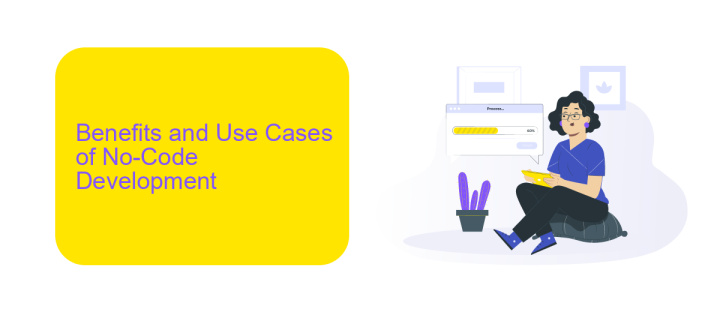How to Become a No-Code Developer
In the digital age, the demand for software solutions has skyrocketed, but not everyone has the time or resources to learn traditional coding. Enter the world of no-code development—a revolutionary approach that empowers individuals to create powerful applications without writing a single line of code. This guide will walk you through the essential steps to become a proficient no-code developer.
Introduction to No-Code Development
No-code development is revolutionizing the way individuals and businesses approach software creation. By eliminating the need for traditional programming skills, no-code platforms empower anyone to build functional applications, websites, and automations. This democratization of technology opens doors for people from diverse backgrounds to innovate and solve problems with digital solutions.
- Ease of Use: No-code tools are designed with user-friendly interfaces that often involve drag-and-drop features.
- Cost-Effective: Reduces the need for hiring specialized developers, making it an affordable option for startups and small businesses.
- Speed: Accelerates the development process, allowing for rapid prototyping and deployment.
- Flexibility: Offers a wide range of templates and customization options to suit various needs.
- Integration: Tools like ApiX-Drive facilitate seamless integration with other services, enhancing functionality without complex coding.
In essence, no-code development is breaking down barriers in the tech world. It provides an accessible pathway for those who wish to bring their ideas to life without extensive programming knowledge. With the right tools and a bit of creativity, anyone can become a no-code developer and contribute to the digital landscape.
Benefits and Use Cases of No-Code Development

No-code development offers numerous benefits, making it an attractive option for individuals and businesses alike. One of the primary advantages is the significant reduction in development time. Traditional coding can take weeks or even months, while no-code platforms allow users to build applications in a matter of hours or days. Additionally, no-code tools are cost-effective, eliminating the need for expensive developer salaries and reducing overall project costs. This democratizes app development, enabling non-technical users to create functional applications without the need for extensive programming knowledge.
The use cases for no-code development are vast and varied. It is particularly beneficial for small businesses and startups that need to quickly prototype and launch their products. No-code platforms are also ideal for automating business processes, such as customer relationship management (CRM) and inventory management. For instance, services like ApiX-Drive facilitate seamless integrations between various applications, allowing businesses to automate workflows without writing a single line of code. This enhances operational efficiency and allows teams to focus on more strategic tasks.
Getting Started with No-Code Development

Starting your journey as a no-code developer can be both exciting and intimidating. The first step is to familiarize yourself with various no-code platforms available. These platforms provide the tools you need to build applications without writing a single line of code.
- Choose a no-code platform: Popular options include Bubble, Adalo, and Webflow. Evaluate their features and pricing to find the best fit for your needs.
- Learn the basics: Most platforms offer tutorials and documentation. Spend time understanding the interface and core functionalities.
- Start with a simple project: Begin with a small, manageable project to apply what you've learned. This could be a personal blog, a portfolio site, or a basic app.
- Integrate services: Use tools like ApiX-Drive to connect different applications and automate workflows, enhancing your project's functionality.
- Join a community: Engage with other no-code developers through forums, social media groups, and online courses for support and inspiration.
By following these steps, you'll build a solid foundation in no-code development. Remember, practice and persistence are key. As you gain experience, you'll be able to tackle more complex projects and fully leverage the power of no-code tools.
Developing Your No-Code Skills

Becoming proficient as a no-code developer involves continuous learning and practice. Start by familiarizing yourself with various no-code platforms such as Bubble, Webflow, and Adalo. These platforms offer intuitive interfaces that allow you to create complex web applications without writing a single line of code.
Once you have a good grasp of the basics, it's essential to work on real-world projects. This hands-on experience will not only reinforce your learning but also help you build a portfolio that showcases your skills. Additionally, joining no-code communities can provide valuable insights and support from fellow developers.
- Explore different no-code tools and platforms.
- Work on real-world projects to gain practical experience.
- Join no-code communities for support and networking.
- Utilize integration services like ApiX-Drive to connect various apps and automate workflows.
Using integration services such as ApiX-Drive can significantly enhance your no-code projects. ApiX-Drive allows you to effortlessly connect different applications and automate tasks, making your workflows more efficient. By mastering these tools, you can expand your capabilities and take on more complex projects with ease.
- Automate the work of an online store or landing
- Empower through integration
- Don't spend money on programmers and integrators
- Save time by automating routine tasks
Career Opportunities for No-Code Developers
No-code developers have a wide array of career opportunities available to them, thanks to the growing demand for rapid application development and automation. They can work as freelance consultants, helping businesses streamline their processes without the need for extensive coding. Companies are increasingly looking for no-code developers to create internal tools, automate workflows, and develop customer-facing applications. These roles often require proficiency in popular no-code platforms like Bubble, Adalo, and Webflow, which enable the creation of sophisticated applications without writing a single line of code.
Another promising career path for no-code developers is in the realm of system integration. Businesses frequently need to connect various software applications to ensure seamless data flow and operational efficiency. No-code developers can leverage tools like ApiX-Drive to set up and manage these integrations without deep technical knowledge. This not only saves time but also reduces the cost associated with traditional development methods. As companies continue to adopt no-code solutions, the demand for skilled no-code developers who can handle complex integrations and automate business processes is expected to grow significantly.
FAQ
What is a no-code developer?
What skills are needed to become a no-code developer?
Can I create complex applications using no-code tools?
How can I integrate different applications and automate workflows as a no-code developer?
Is no-code development suitable for enterprise-level projects?
Do you want to achieve your goals in business, career and life faster and better? Do it with ApiX-Drive – a tool that will remove a significant part of the routine from workflows and free up additional time to achieve your goals. Test the capabilities of Apix-Drive for free – see for yourself the effectiveness of the tool.


